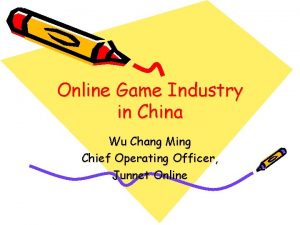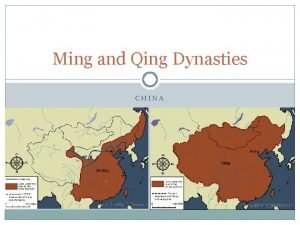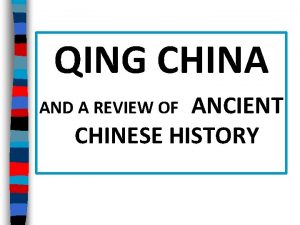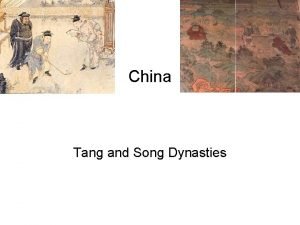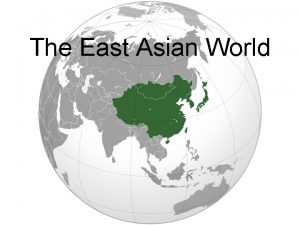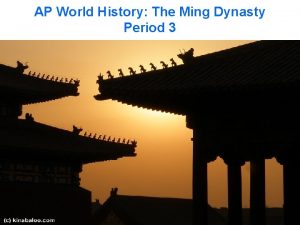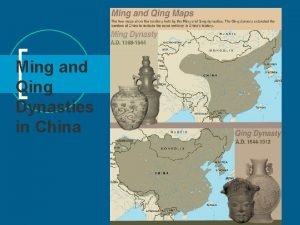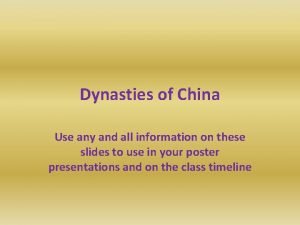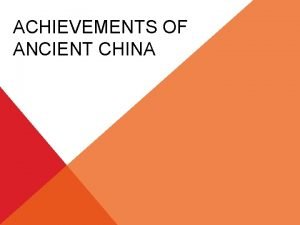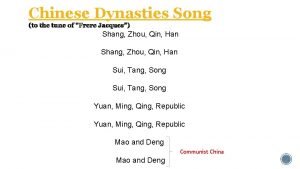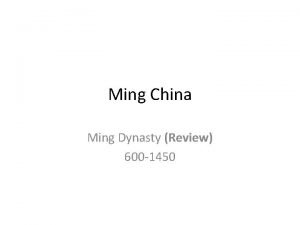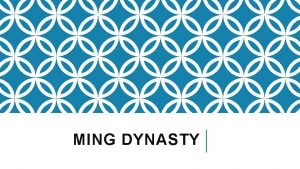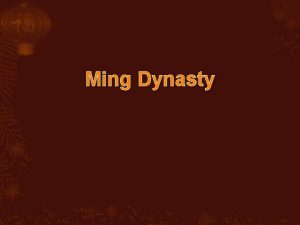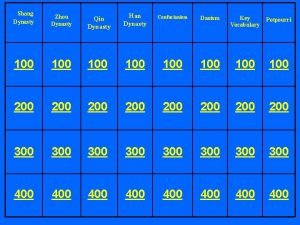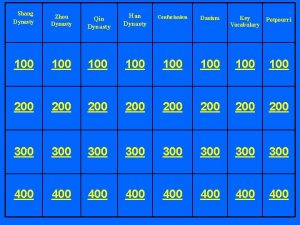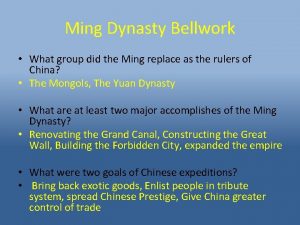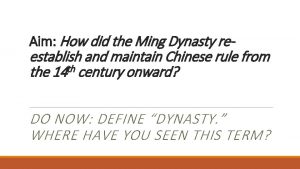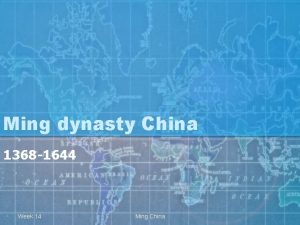Aim How did the Ming Dynasty shape Chinese















- Slides: 15

Aim: How did the Ming Dynasty shape Chinese history? MOTIVATION: If the Chinese had “discovered” and settled in the United States rather than Europeans how would your life be different?

I. MING DYNASTY 1368 -1644 A. The Ming dynasty was a period of cultural restoration and expansion.


B. Founded by Chu Yuanzhang chose the name Hong-wu –Vast Military, who executed the following reforms in China. 1. Moved capital to Beijing. 2. Abolished all Mongolian influence. 3. Centralized bureaucracy. 4. Instituted Public beatings for bureaucrats found guilty of corruption and incompetence, and exiled anyone that was a threat to the throne. 5. Reinstituted the scholar civil gentry class along with the civil service exam and Confucianism.

6. Introduced measures to improve lives of peasants. 7. Unoccupied land would become the tax-exempt property of those who cleared and cultivated it. 8. Implemented public works projects, thus increasing the degree of technology and numbers of skilled engineers and artisans. 9. Extended Chinese authority to Mongolia, Korea, and Southeast Asia. 10. Made the Forbidden City most beautiful of the Ming’s cultural achievements.

II. ACHIEVEMENTS A. Zheng He: 1405 -1433, Chinese explorer and navigator was sent to establish relations with foreign countries such as- the Southeast Asian kingdoms, Persia, Southern Arabia, East Africa, and to expand trade contacts.





B. Exported porcelain, silk, vases, tea. C. Merchants became increasingly wealthy in this trade. D. Ming prosperity was reflected in the fine arts.

III. MING DECLINE A. After 1400, China aimed to LIMIT it’s overseas commerce, and the Ming War Fleet dramatically declined. B. Highly centralized, absolutist structure developed by Hongwu and continued by Yunglo could not be continued. There existed official corruption, isolation of weak rulers, public works projects fell into disrepair, floods, droughts, and famine afflicted the land. C. Increased foreign threats, mostly by the Manchu. D. The last emperor of the Ming, Chongzhen, commited suicide as the walls of the Forbidden City were scaled by rebels…the Dynasty ended in 1644.



 How did the ming dynasty restore chinese rule to china?
How did the ming dynasty restore chinese rule to china? Ming china spice chart
Ming china spice chart Ming dynasty game online
Ming dynasty game online Rise of the qing dynasty
Rise of the qing dynasty Ming and qing dynasty
Ming and qing dynasty Ming dynasty trade routes
Ming dynasty trade routes Qing social structure
Qing social structure Golden ages of china tang and song dynasties
Golden ages of china tang and song dynasties Rise of the ming dynasty
Rise of the ming dynasty Qing conquest of the ming
Qing conquest of the ming Ap world
Ap world Ming dynasty
Ming dynasty Xia dynasty government
Xia dynasty government What were the major achievements of the shang dynasty
What were the major achievements of the shang dynasty Chinese dynasty acrostic poem
Chinese dynasty acrostic poem Shang zhou qin han sui tang song
Shang zhou qin han sui tang song


